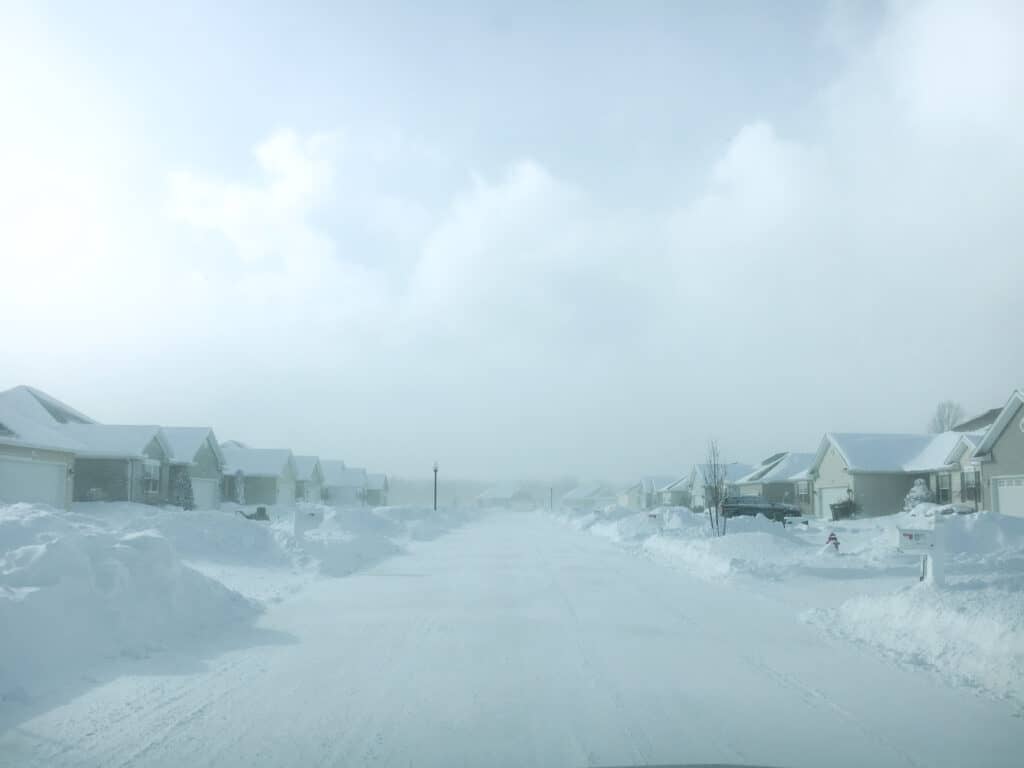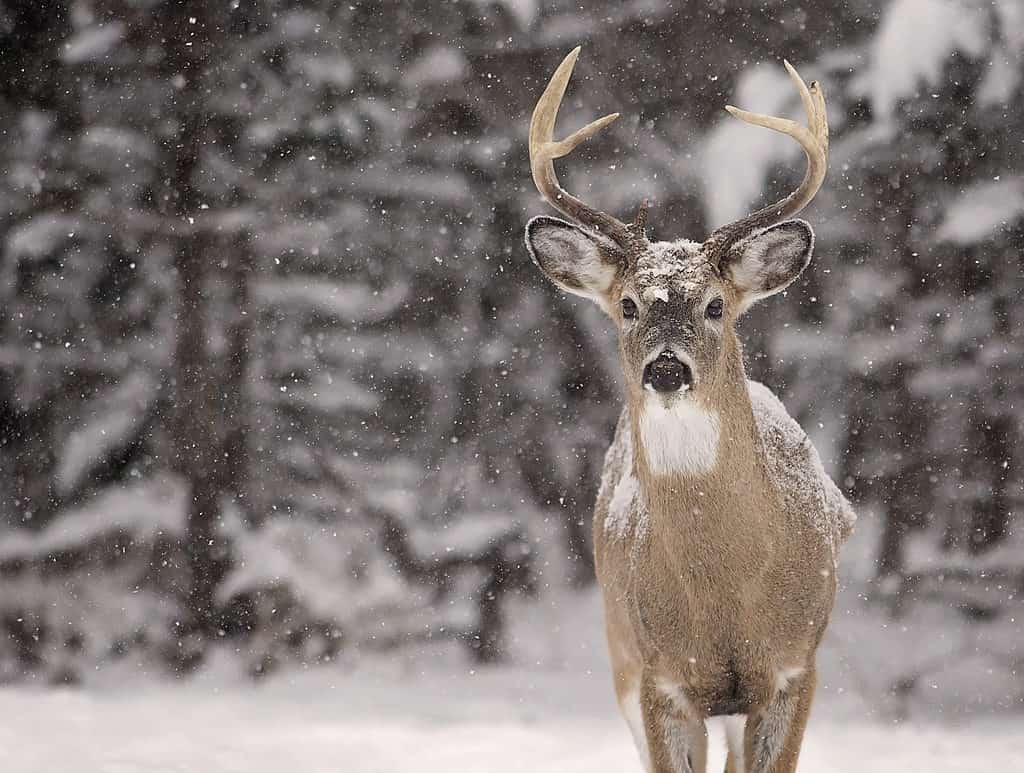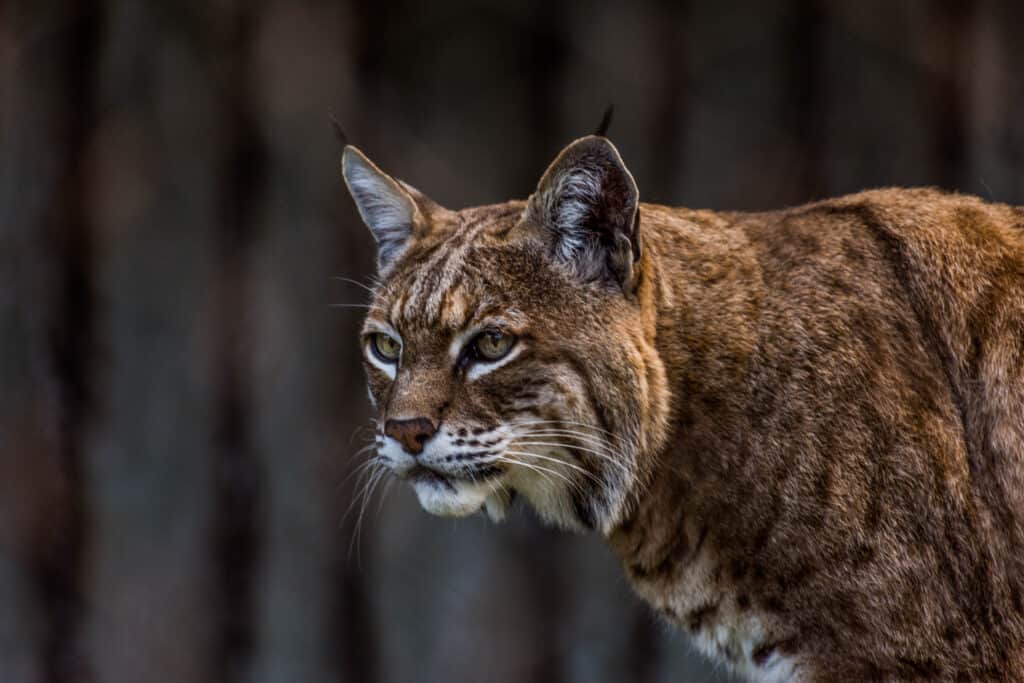The state of Vermont is no stranger to the cold. This state receives at least 89 inches of snow annually. It also snows about 59 days a year. Vermont’s weather is so unpredictable that sometimes it starts snowing as early as August! When experiencing cold temperatures, avoid frostbite on your skin by staying warm, wrapped up, and dry.
Keep reading to discover the coldest temperature ever recorded in Vermont and more fun facts about the event and the town it took place in!
The Coldest Day Ever Recorded in Vermont

The coldest temperature ever recorded in Vermont was -50 degrees Fahrenheit on December 30, 1933.
©eyerazor/Shutterstock.com
The state of Vermont has seen some cold days, but the coldest temperature ever recorded was -50 degrees Fahrenheit on December 30, 1933 in Bloomfield. Not a lot is known about this event or how people reacted. However, experts estimate that the area lost about 20% of its apple trees during the 1933-1934 winter season. Vermont also experienced a harsh winter during 1917-1918 where the cold temperatures destroyed multiple plants including the Baldwin apple strain.
A Brief History of Bloomfield, Vermont
Bloomfield is a small and quiet town in Essex County, Vermont with a population of fewer than 250 people. In the last 2020 census, only 217 people were living in Bloomfield. The town’s original purpose was mining. It was first called “Minehead” until 1830 when the state General Assembly changed the name. This small town sits on the Connecticut River and was formed/chartered on June 29, 1762.
The Climate in Vermont
Vermont, also known as the Green Mountain State is a northeastern state that experiences tough winters and freezing temperatures. Although the coldest temperature recorded in Vermont was -50 degrees Fahrenheit, it might surprise you to know they aren’t the first, second, or third coldest state in the U.S. Instead the coldest state in the U.S is Alaska, with an average daily temperature of 28.1 degrees Fahrenheit. The average temperature in Vermont is 44.5 degrees Fahrenheit. The average lowest temperature is 33.1 while the highest is 55.4 degrees Fahrenheit.
Not only does the temperature fluctuate, but Vermont also sees lots of rain, snow, and warm weather months. For example, the state of Vermont experiences about 3 months of warm weather where the temperature is consistently above 70 degrees. Vermont surprisingly receives precipitation about 150 days of the year. On average, the state of Vermont sees 83 inches of snow and 43 inches of precipitation each year.
Common Animals in Vermont That Survive Winter
Now that we know more about how cold the state of Vermont gets and the coldest its ever been, we can dive into common animals that live in the area and their survival methods.
Snowy Owls

The snowy owl is also known as the polar owl.
©Bruno De Faveri/Shutterstock.com
Snowy owls hide very well during winter in Vermont. Their snowy white feathers are light enough to blend in with snow. During winter they hunt for rodents, but otherwise hide from predators. Snowy owls aren’t picky eaters and consume seabirds, mice, ducks, and Arctic hares. Although they have white feathers, snowy owls have some black or brown markings. They are about 2 feet long and weigh 4.5 pounds. They are also called polar owls and Arctic owls.
Eastern Chipmunks

Chipmunks in Vermont hibernate in winter.
©iStock.com/rodmacpherson
Eastern chipmunks are small animals native to North America. You can find them from Canada all the way down to the state of Mississippi. These small brown, white, and black chipmunks grow up to a foot long, tail included. They live underground but can climb trees. Their underground nests are impressively extensive and clever. Chipmunks in cold environments, like Vermont, will go into a state of hibernation.
White-tailed Deer

During winter in Vermont, white-tailed deer do not hibernate.
©iStock.com/Lynn_Bystrom
White-tailed deer are very common in Vermont. They use their brown coats to blend into wooded areas very well. These deer have unique markings, best known for their white tails and ears. During winter, they don’t hibernate. Instead, these adorable animals grow thicker coats and slow down their metabolism, eating fewer greens, berries, and nuts. They shed their thick coats once spring arrives.
Bobcats

You can find bobcats in Vermont.
©Victor Arita/Shutterstock.com
Bobcats are common in Vermont, but they stay hidden from humans, rarely venturing into neighborhoods. They are solitary animals, most active during dawn and dusk. Bobcats are not much larger than housecats. They are natural hunters and can leap up to their meters when hunting down their prey. Bobcats survive winter by staying in their dens, away from the snow. They instead search for warm regions without snow since their paws aren’t built for the cold weather.
Up Next:
- Discover the Most Dangerous (Deadliest!) Animals in Vermont
- Discover the Coldest Place in Alaska
- The 5 Best Places to Camp in Vermont this Summer
- Discover the Coldest Place in Massachusetts
- Discover the Coldest Temperature Ever Recorded in Wisconsin
The photo featured at the top of this post is © iStock.com/4u4me
Sources
- Vermont State Hazard Mitigation Plan, Available here: https://vem.vermont.gov/sites/demhs/files/documents/2018SHMP-HazardAssessmentExtremeCold.pdf
Thank you for reading! Have some feedback for us? Contact the AZ Animals editorial team.






